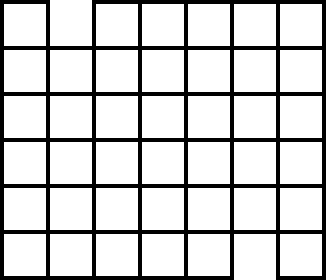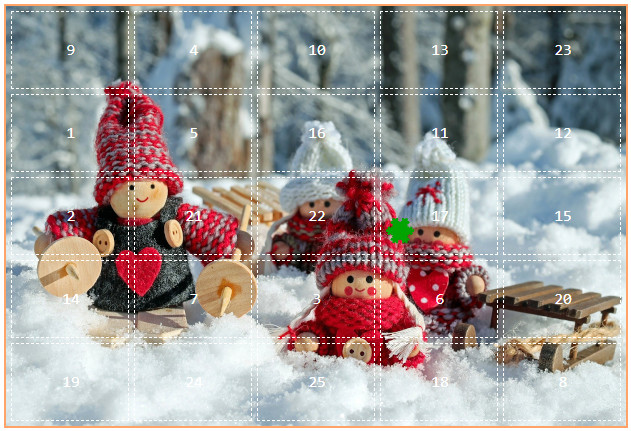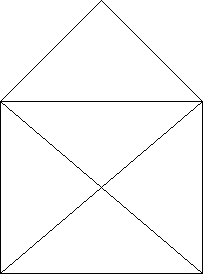
Here are eight new lateral thinking puzzles — play along with us as we try to untangle some perplexing situations using yes-or-no questions.

Here are eight new lateral thinking puzzles — play along with us as we try to untangle some perplexing situations using yes-or-no questions.
King William’s College, on the Isle of Man, has posted the 2020 edition of “The World’s Most Difficult Quiz,” with its customary epigraph, Scire ubi aliquid invenire possis ea demum maxima pars eruditionis est (“The greatest part of knowledge is knowing where to find something”). Answers will be posted on January 20; as usual, MetaFilter is maintaining a Google spreadsheet of communal guesses.
And the Royal Statistical Society has posted its own 2020 Christmas quiz, which it describes as “brain-melting.” “You’ll need a combination of general knowledge, logic, and lateral thinking skills to successfully crack these puzzles — but as always, no specialist mathematical knowledge is required.” Solutions are due by the end of January; the top prize is £150 in Wiley book vouchers.
William Friedman, the father of modern American cryptology, was fond of a cipher devised by Francis Bacon — a scheme so flexible that it could hide a message in a drawing, a piece of sheet music, almost any imaginable setting (“anything can be made to signify anything”).
In 1918 he used it to hide a message in the graduation photograph of the codebreakers’ class that he’d taught with his wife Elizebeth (click to enlarge). Some students are looking at the camera, others to the side — they’re encoding the message KNOWLEDGE IS POWER, a quotation of Bacon’s that was a favorite of Friedman’s.
Friedman kept the photo on his desk for the rest of his career, and when he died in 1969 Elizabeth had the phrase engraved on his tombstone, in a design of her own devising:

In 2017, cryptographer Elonka Dunin noticed that the inscription is composed of both serif and sans-serif letters. It turns out that even this is a cipher — Elizabeth had used it to conceal the letters WFF, William’s initials. Dunin calls it “a fitting tribute, in the life of a couple who had been so dedicated to the field of codes and ciphers.”
There’s more on the Friedmans’ legacy in this NSA publication.
CHAIN is to INGOT as MILLS is to … ?
Between July 2015 and October 2018, the National Security Agency offered a monthly puzzle written by a staff member. Here’s the puzzle for October 2015, created by applied research mathematician Ben E.:
Kurt, a math professor, has to leave for a conference. At the airport, he realizes he forgot to find a substitute for the class he was teaching today! Before shutting his computer off for the flight, he sends an email: “Can one of you cover my class today? I’ll bake a pie for whomever can do it.” He sends the email to Julia, Michael, and Mary Ellen, his three closest friends in the math department, and boards the plane.
As Kurt is well-known for his delicious pies, Julia, Michael, and Mary Ellen are each eager to substitute for him. Julia, as department chair, knows which class Kurt had to teach, but she doesn’t know the time or building. Michael plays racquetball with Kurt so he knows what time Kurt teaches, but not the class or building. Mary Ellen helped Kurt secure a special projector for his class, so she knows what building Kurt’s class is in, but not the actual class or the time.
Julia, Michael, and Mary Ellen get together to figure out which class it is, and they all agree that the first person to figure out which class it is gets to teach it (and get Kurt’s pie). Unfortunately the college’s servers are down, so Julia brings a master list of all math classes taught that day. After crossing off each of their own classes, they are left with the following possibilities:
After looking the list over, Julia says, “Does anyone know which class it is?” Michael and Mary Ellen immediately respond, “Well, you don’t.” Julia asks, “Do you?” Michael and Mary Ellen both shake their heads. Julia then smiles and says, “I do now. I hope he bakes me a chocolate peanut butter pie.”
Which class does Kurt need a substitute for?

USC mathematician Solomon Golomb offered this puzzle in his column, “Golomb’s Gambits,” in Johns Hopkins Magazine. How can you dissect this figure into four congruent pieces?
A problem from Canada’s 2003 Hypatia contest:
Xavier and Yolanda are playing a game. They begin with two piles of three coins each and take turns; on each turn a player removes one or more coins from any one pile. The winner is the player who takes the very last coin. Xavier always goes first, but Yolanda has a strategy that ensures that she will always win. What is it?

University of Cambridge mathematician Matthew Scroggs has post his annual Christmas puzzle: Behind each day in an advent calendar lies a puzzle with a three-digit answer. Combined, the answers reveal a series of compass directions that lead to Santa’s house. Ten randomly selected people who solve all the puzzles and find Santa’s house will receive prizes. More info here.

Can you draw this figure without lifting your pencil from the paper?